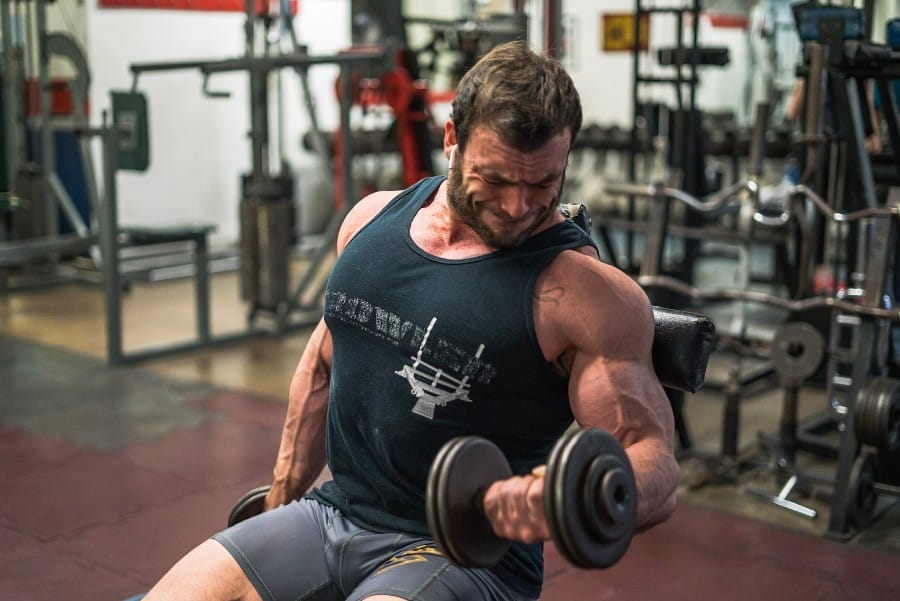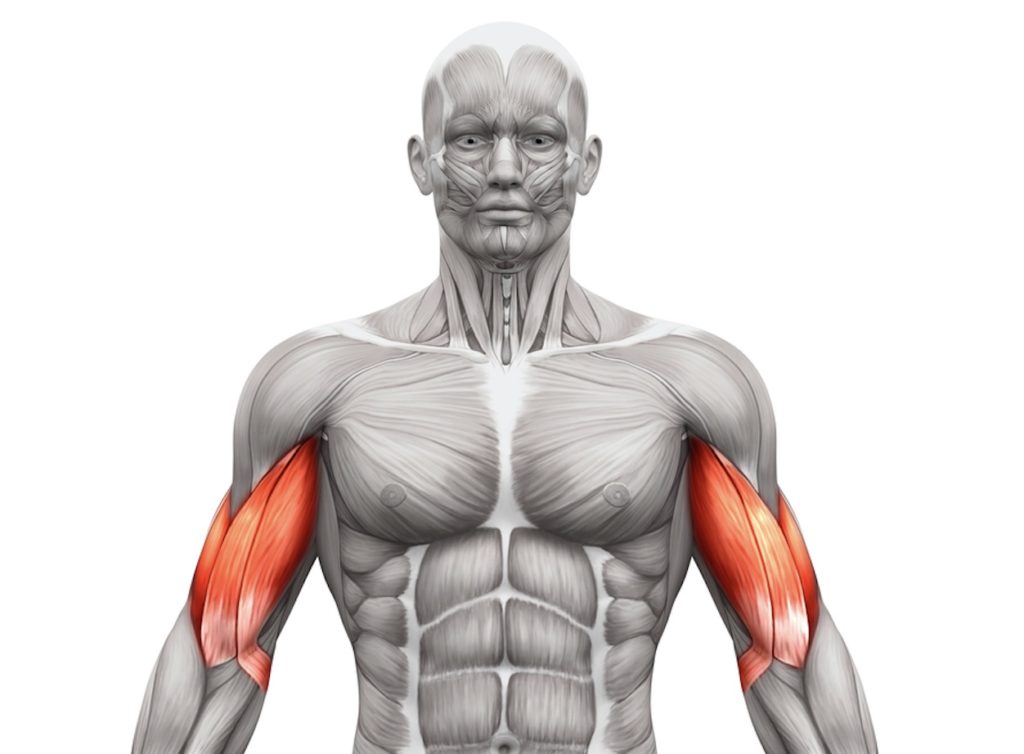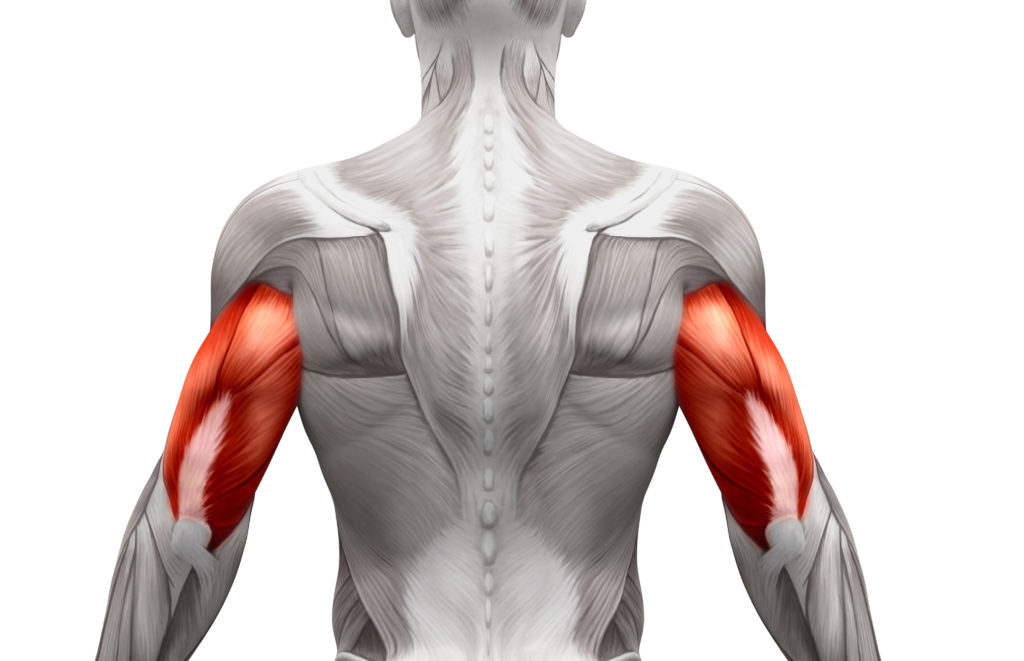Training the arms is for more than vanity. Sure, having big biceps and thick triceps can improve overall strength and performing in movements like the bench press and pull-ups, but they can also command respect as you walk down the street. Many lifters who struggle with increasing arm size and strength are left scratching their heads, mindlessly slaughtering their arms with unnecessary training volume, or worse: accepting their fate.
This article will dive into the topic of how often to train the arms, common arm training misconceptions, and arm training guidelines for beginner, intermediate, and advanced lifters. Before diving in, make sure you check out the great video discussing this topic from Jeff Nippard below!
Are Compound Movements ENOUGH?
Compound movements like vertical overhead pulling (pull-ups, chin-ups, lat pulldowns, etc), rows, and presses (bench press, overhead press, etc) all call upon the biceps and triceps to assist in movement execution.
Some coaches feel that only training compound movements is sufficient to increase biceps and triceps strength and size. While this can be highly effective at increasing foundational size and strength, lifters and athletes looking to maximize overall arm development will need to add direct arm training movements into their training program. It is also important to note that if you are performing pressing and pulling compound movements, and the arms are being highly utilized, you may actually be doing the compound movement incorrectly.
For example, if your goal in a row is to maximize back development and your biceps are on fire, odds are you are not effectively training the back. This in itself is an issue, and should be addressed by decreasing loads and increase the lifters ability to isolate the back muscles (or whatever muscle group is being trained) to a greater degree.
Arm Training Overview
Here are a few key points to keep in mind when strengthening the arms.
- Progressive Overload: Like most muscles, progressively overloading movements is key to increase strength and size of the arms.
- Quality vs Quantity: Understanding the optimal total training sets for the biceps and triceps is essential for optimal development. Adding unnecessary training volume will lead to injury and limited growth.
- Proper Mechanics: Understanding the proper form and technique, and how to elicit the highest amounts of muscle activation per repetition is key. Refer to the sections below.
- Employ Advanced Training Techniques: Doing The same workouts every month will run its course. While you should not change exercises every workout/week, you can employ intensity techniques like drop sets, super sets, eccentrics, etc to maximize muscle growth and add variety into your training.
- Beginners: Stick to the basics for arm training, and do them right. Many beginners will try performing highly advanced and isolated movements, however lack the overall muscle development and ability to contract the muscle units voluntarily (mind-muscle connection). Learn to engage the muscles first before trying highly advanced exercises.
How Often to Train the Arms
There is no one-size-fits-all answer here, as training frequency is highly dependent on availability to train, overall training volume per day, and the ability to recover.
In the below sections we will assess total training volume per week, how that impacts training frequency, and why some lifters who are already training the arms directly may benefit from decreasing training volume and/or including more advanced training techniques (rather than simply adding more training volume).
Beginner
A beginner in the gym will need to build up a base so they can have the ability to handle higher workloads. The biceps and triceps, like other muscle and will need to have a foundation before jumping to higher frequencies. For this reason, training the arms (in addition to volume of training pulling and pressing movements) 2x a week directly can serve as a beneficial starting point.
-
Training History: >1 year of resistance training
- Optimal Sets per Week: 8-12 total sets of direct work for both triceps and biceps
- Frequency: 2-3 days per week, or more. This is dependent on the amount of volume per day

Intermediate & Advanced
Both the intermediate and advanced athletes will often have trained the triceps and biceps through other movements like pull-ups, chin-ups, presses, and rows. That said, to optimally develop the arms, dedicated arm training is necessary. Below are some arm training guidelines for intermediate and advanced lifters.
- Training History: 1+ years of resistance training
- Optimal Sets per Week: 10-14 total sets of direct work for both triceps and biceps
- Frequency: 2-3 days per week, or more. This is dependent on the amount of volume per day
- WARNING: Many lifters will experience hindered growth and/or overuse injury training the triceps and biceps directly with more than 18 sets per week.
Arm Training Tips
Before you jump into more curls and pushdowns, it is important to dissect your training program to determine if your exercise selections, repetitions ranges, and loading are optimal for eliciting muscle growth. Sometimes, the answer is not always more reps and sets (volume), but simply reworking the program.
Biceps Training Tips
Below are a few other variables you can do to increase muscle growth and biceps activation without having to increase your total sets of direct biceps training.

- Start your workout with a heavier curl movement, like the barbell curl using a rep range of 6-8 repetitions.
- Too narrow of a grip will limit muscle engagement of the biceps. While it can help to add variety to training, a very narrow grip was may negatively impact biceps engagement.
- Combining exercises in a supersetting manner can increase muscle growth, especially when performing movements that target different aspects of the biceps. For example, pairing a preacher curl and a seated incline curl.
- Eccentric training, especially after heavier concentric work, can optimize muscle growth and increase protein synthesis. Try adding 2-3 reps of eccentric barbell curls after the heavy curls early in the workout.
- Best Biceps Exercises!
Triceps Training Tips
Below are a few other variables you can do to increase muscle growth and triceps activation without having to increase your total sets of direct triceps training.

- A narrower grip in the close grip bench press has been shown to increase triceps activation vs a standard, shoulder width grip. That said, some lifters may find discomfort taking a very narrow grip. If this is the case, find a more coforablt grip on the wrist/shoulder, which is often still more narrow than your standard bench grip to limit wrist and/or shoulder injury. (3)
- Combining exercises in a supersetting motion can increase muscle growth, especially when performing movements that target different aspects of the triceps. For example, pairing triceps overhead extensions with dips, each working different muscle groups of the triceps.
- Have issues feeling the triceps? Employ full range of motion sets to maximize the stretch and muscle damage on the triceps.
- Best Triceps Exercises!
Sample Arm Workouts
Below are two sample arm workouts to target the biceps and triceps in the same day. The first one is for beginners, focusing on larger compound movements and isolation exercises to increase overall strength and muscle mass. The intermediate workout employs more advanced exercises and techniques to optimize muscle growth.
Both workouts train the biceps and triceps each with none (9) direct working sets of volume, making this a standard 2-day arm workout routine. The second day would use slightly less volume (1-2 exercises for 2-3 sets per movement).
Note, for best results do not do this same workout on both days, but rather choose slightly different exercises on the second day to add variety to your training program.
Beginner Arm Workout
- Barbell Curl: 3 sets of 5-8 reps, using a heavy, challenging load
- Barbell Floor Press: 3 sets of 5-8 reps, using a heavy, challenging load
- EZ Bar Preacher Curl: 3 sets of 8-10 reps, slow and controlled lowering of weight
- Cable Triceps Push Down: 3 sets of 10-12 repetitions
- Seated Incline Dumbbell Hammer Curl: 3 sets of 10-12 repetitions
- Dumbbell Overhead Extension: 3 sets of 10-12 repetitions

Intermediate/Advanced Arm Workout
- Barbell Curl: 3 sets of 5-8 reps, using a heavy, challenging load / 2-3 eccentric repetitions lasting 3-5 seconds at the end of every set
- Close Grip Bench Press: 3 sets of 5-8 repetitions / Perform one drop set after the third set to failure
- EZ Bar Preacher Curl: 3 sets of 8-10 repetitions / Superset with Seated Incline Dumbbell Curl – 3 sets of 8-10 repetitions
- Weighted Dip: 3 sets of 8-10 repetitions / Superset with Cable Overhead Triceps Extension – 3 sets of 8-10 repetitions
More Arm Training Guide
Want more arm exercise guides, training tips, and workouts? Check out some of our most successful biceps and triceps resources below!
References
- Biceps Training Tips for Hypertrophy. Dr. Mike Isreatel. Renaissance Periodization. 1/16/2017. https://renaissanceperiodization.com/bicep-training-tips-hypertrophy/
- Triceps Hypertrophy Training Tips. Dr. Mike Isreatel. Renaissance Periodization. 4/19/2017. https://renaissanceperiodization.com/triceps-hypertrophy-training-tips/
- The influence of grip width and forearm pronation/supination on upper-body myoelectric activity during the flat bench press. Dr. Lehman GJ. Journal Strength and Conditioning Research. 8/19/2005. https://www.ncbi.nlm.nih.gov/pubmed/16095407